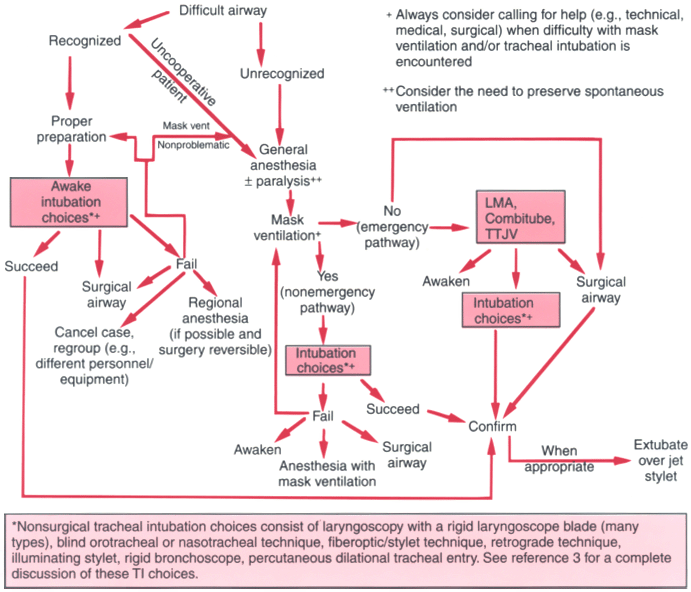Figure 42-23
Single-flow diagram version of the American Society of
Anesthesiologists (ASA) Difficult Airway Algorithm. +, Always consider calling for
help (e.g., technical, medical, surgical) when difficulty with mask ventilation or
tracheal intubation is encountered; ++, consider the need to preserve spontaneous
ventilation; *, nonsurgical tracheal intubation choices consist of laryngoscopy
with a rigid laryngoscope blade (many types), blind orotracheal or nasotracheal intubation,
fiberoptic or stylet technique, retrograde technique, illuminating stylet, rigid
bronchoscope, and percutaneous dilational tracheal entry. Benumof[30]
offers a complete discussion of these tracheal intubation choices. (Adapted
from Benumof JL: Laryngeal mask airway and the ASA difficult airway algorithm.
Anesthesiology 84:686, 1996.)

